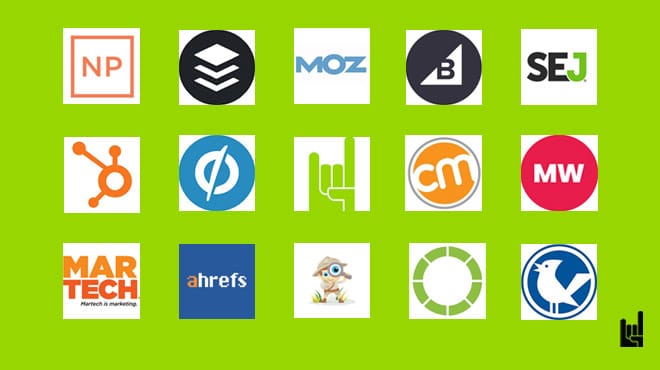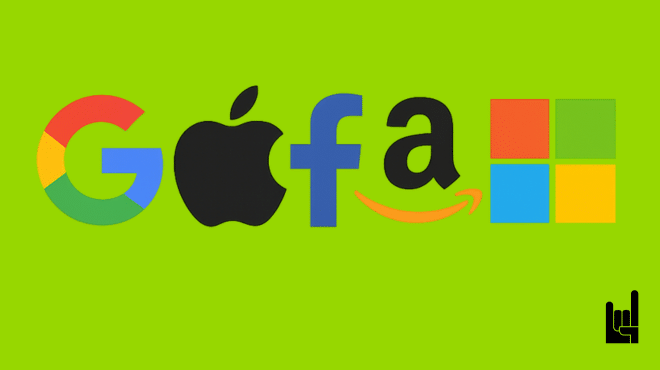This is not another article about funnels. It is a four (4) step guide on how to move from not getting any leads to building a system that gets you leads.
Reality check
Early on, it’s crucial to acknowledge that your offerings, no matter how distinctive you perceive them to be, are likely not entirely unique. Your target audience might find numerous alternatives that similarly cater to their needs and preferences. While you may have poured your heart and soul into crafting a product or service that you believe stands out, it’s essential to remember that your potential customers might not see it the same way.
Therefore, it becomes imperative to understand your target audience’s perspective. What drives their purchasing decisions? What are their pain points and how do they evaluate different solutions? By stepping into their shoes and analyzing the market through their eyes, you can gain valuable insights into how your offerings stack up against the competition. This understanding will enable you to effectively refine your marketing strategies, highlight your unique selling propositions, and ultimately position your business for success in a crowded marketplace.
But all the above is just theory. Let’s move from theory to practice…
The best sales lesson I’ve ever learned.
In sales, forging a strong connection and cultivating trust stand as paramount principles. This invaluable lesson was ingrained in me during my early career as a consultant at a prestigious firm. Through this experience, I discovered that the sales process entails a strategic progression, where we must a) initially sell ourselves as individuals, then ) our company as a whole, and ultimately, c) the specific product or service we offer.
- Selling oneself encompasses a multifaceted approach. It involves demonstrating expertise by showcasing a deep understanding of the industry, market trends, and relevant knowledge. Professionalism is key, as it reflects integrity, respect, and a commitment to ethical business practices. Additionally, displaying a genuine interest in understanding the customer’s needs fosters a sense of empathy and builds rapport. Active listening plays a crucial role in this process, as it allows us to fully comprehend the customer’s pain points, challenges, and desired outcomes. By asking insightful questions and paraphrasing the customer’s statements, we demonstrate that we are actively engaged and genuinely invested in finding solutions that meet their specific requirements. Effective communication further enhances the connection, as it ensures clarity, transparency, and mutual understanding. By showcasing credibility and reliability through consistent follow-through and delivering on promises, we lay the foundation for a trusting relationship.
- Once we have established ourselves as trustworthy individuals, the subsequent step is to “sell” our company. This entails highlighting the company’s reputation by showcasing testimonials, case studies, and industry recognition. Emphasizing the company’s expertise in its field and its track record of successful projects further solidifies its credibility. Moreover, showcasing the company’s values, mission, and commitment to customer satisfaction demonstrates its dedication to providing exceptional service and building long-lasting relationships. By emphasizing the company’s strengths, capabilities, and unique selling points, we instill confidence in the customer’s mind, assuring them that they are partnering with a reliable and reputable organization.
- Finally, with a strong personal connection and a positive company image established, we can effectively “sell” our product or service. This involves a deep understanding of the product’s features, benefits, and unique value proposition. By aligning these aspects with the customer’s specific needs and demonstrating how the product or service solves their pain points, we can showcase its relevance and value. Addressing any objections or concerns the customer may have with transparency and honesty further strengthens trust. Providing demonstrations, case studies, or testimonials that highlight the product’s effectiveness and positive outcomes can be compelling. By showcasing the product’s potential to improve the customer’s business or life, we can persuade them to make a purchase.
In essence, the sales process is a journey that begins with building trust and rapport, progresses to showcasing the company’s strengths, and culminates in demonstrating the product’s value. By mastering each stage of this process, we can increase our chances of success and build long-lasting relationships with our customers.
Keep reading to see how the above sales lesson translates into a clear working-like-hell marketing approach…
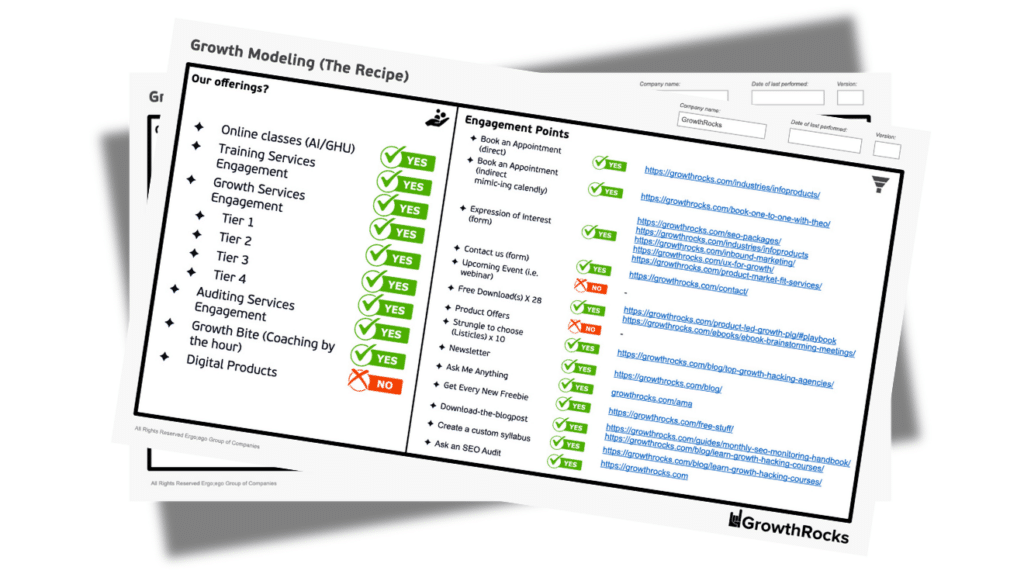
What’s the Product?
In the service industry, your offerings extend far beyond the tangible courses, services, or coaching sessions you provide. You’re selling the expertise and authority you’ve cultivated in your field, the trustworthiness you embody, and the thought leadership you demonstrate. Your clients are investing in the promise of a better future, the knowledge and skills you possess, and your ability and willingness to share those assets. They’re mostly buying into the passion you exude for your work, which can be a powerful motivator.
Similarly, if you sell products, such as fashion items, your offerings transcend the physical attributes of your merchandise, even if those attributes are visually striking and capable of stopping a potential customer’s scroll on social media. You’re selling the reliability and convenience of your brand, the sustainability of your practices, and the expertise that goes into your designs. Your customers seek durability and trust and are willing to pay a premium for products that deliver on those promises.
In essence, whether you’re selling services or products, you’re selling a solution to a problem, a promise of a better future, and an experience beyond the transaction itself.
So, stop selling the products and start selling the raw ingredients that make these products attractive to your potential clients.
Step 01: Identifying Your Offerings
The first and most crucial step in developing a successful business strategy is to clearly define your offerings. These offerings can range from tangible products and services to digital products and other intangible offerings.
In the context of our product marketing agency GrowthRocks, the following offerings have been identified –and can be used as a template or inspirational purpioses:
- Online Classes: These include courses on AI offered through the Academy and Growth Hacking University.
- Ad-Hoc Training Services: These are customized training services provided on a case-by-case basis.
- Growth Services: These are offered in 4 tiers, presumably catering to different business needs and budgets.
- Auditing Services: These services likely involve assessing and analyzing a business’s operations or strategies.
- Coaching by the hour: These are provided on an hourly basis, offering personalized guidance and advice.
Are they on your site?
Once your offerings have been identified, the next step is to ensure that they are clearly and comprehensively described on your website. This is essential for attracting and converting potential customers. If your offerings are not well-described on your website, it’s crucial to go back to the beginning and invest time in defining and documenting them.
The Importance of Clear Definitions
Without clear definitions of your offerings, it’s impossible to effectively market and sell them. Potential customers need to understand what you’re offering, how it can benefit them, and why they should choose your business over competitors. By clearly defining and documenting your offerings, you can ensure that your marketing and sales efforts are aligned and that you’re communicating a consistent message to your target audience.
Step 02: A Mindset Shift
To effectively connect with your target audience and guide them towards a purchase, it’s crucial to adopt a specific mindset. Assume that your potential customers are completely unaware of your company, your products or services, and even the need or necessity for what you offer. This lack of awareness means you shouldn’t focus on directly selling your offerings. If you do, there will be a disconnect between what you’re offering and what your audience perceives they need.
Furthermore, it’s important to acknowledge that convincing potential clients to buy your services might be challenging. However, this doesn’t mean it’s equally difficult to demonstrate your value, expertise, and the thoughtfulness behind your processes. By showcasing these aspects, you can build trust and credibility with your audience, even if they’re not immediately ready to make a purchase.
The key question to ask yourself is: “How can I shift my focus from selling to helping my potential customers buy?” This subtle but important shift in perspective can have a significant impact on your marketing and sales strategies. Instead of pushing your products or services, you can focus on providing valuable information, addressing your audience’s pain points, and guiding them through the buying process in a way that feels natural and helpful.
Engagement points and funnels to the rescue… it’s time for the real magic. Keep reading
Step 03: Engaging Potential Clients
Engaging potential clients isn’t about “tricking” them. The key difference between a successful funnel and one that falls flat lies in delivering honest, authentic value. – Theo Moulos CEO GrowthRocks
In this step we need to create entry points aka different stages on your funnel for each product we have and for supportive products to move the customers to the desired paths. You can use the below list as an example, for inspirational reasons and also you can ask us to help you to define your “engagement points”
Creating effective entry points, also known as different stages in your sales funnel, is essential for guiding potential customers towards desired outcomes. These entry points should be tailored to each product and supportive product offered.
Below are a few of the engagement points we use in GrowthRocks. Consider the following examples as inspiration when defining your engagement points:
Funnels:
Newsletter Subscription: Capture leads and nurture relationships by providing valuable content and updates.



Freebies Subscription: Offer enticing free resources or trials to attract potential customers and gather contact information.

AMA (Ask Me Anything): Host interactive sessions or a simple website form where potential customers can engage directly and have their questions answered. Here is an example
Free Resources: Provide valuable resources, such as e-books or templates, in exchange for contact information.

Ask for SEO Audit: Attract businesses interested in improving their online visibility by offering a free SEO audit.

Contact Us Form: Make it easy for potential customers to reach out with inquiries or requests for more information in multiple ways.
Expression of Interest Forms: Allow potential customers to express their interest in specific products or services.
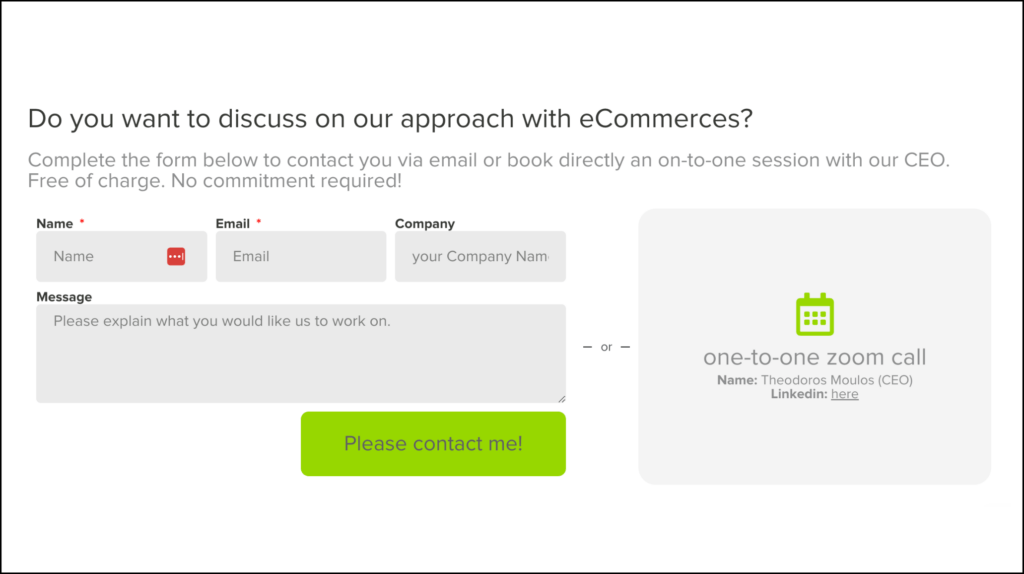

Book Appointments (Direct and Indirect): Enable potential customers to schedule consultations or demos.

Engagement Forms (Struggle to Choose): Assist potential customers who are having difficulty making a decision by offering personalized guidance.

Remember that these are just a few examples. The specific engagement points that are most effective for your business will depend on your products, target audience, and overall marketing strategy. We can help you define them. It’s just an hour call that you can schedule here:
Key Takeaway
Effective engagement points and funnels are essential for attracting potential customers for the following reasons: nurturing and converting them. It’s a step you cannot miss. It’s also the most challenging step because it requires content, landing page development, and digital assets.
Step 04: Nurturing
Nurturing plays a crucial role in guiding potential customers through the sales funnel. By providing relevant and valuable content, addressing their pain points, and building trust, you can increase the likelihood of conversion.
Nurturing potential customers can encompass a range of strategies, including:
- Persuasion: This involves actively presenting arguments and evidence to convince potential customers of the value of your product or service.
- Preparation: This involves guiding potential customers through the process of understanding their needs and how your product or service can meet those needs. It may also involve educating them about your industry or the specific benefits of your offering.
- Top-of-Mind Awareness: This involves maintaining a consistent presence in the minds of potential customers, so that when they are ready to make a purchase, your brand is the first one they think of. This can be achieved through various marketing and communication efforts, such as advertising, social media engagement, and email marketing.
How do we nurture? Via automated activities. Every engagement point comes with an associated automation. Well, secrets no more; here they are one-by-one:
Free Resources
Users request free resources (eBooks, templates, etc.) via a website form, a dedicated landing page, or a widget (i.e., popup on our website or to third parties). Upon submission, they receive an immediate email containing the requested download link. Simultaneously, they are enrolled in a nurturing email series designed to provide additional value and encourage them to book a consultation or appointment. Here is what comes next:
Email 0: The first email is the email with the resource they asked for. Although the link to the resource has become known after submission, we send an email to ensure it will always be accessible from the client.
Email 1: For specific eBooks or Templates, the first email of the nurturing series they get, is to give feedback on what they received and provide their view for improvements.
Email 2: Includes 3 additional free, relevant downloads to further establish expertise and build trust.
Email 3: Promotes a list of free courses or webinars related to the initial download topic, positioning the brand as a thought leader.
Emails 4 & 5: Focus on a clear call to action (CTA), inviting the user to book a free consultation call to discuss their specific needs and how the company can assist them.
SEO Audit
Users request a free SEO audit of their website. Once the audit is complete, they receive a comprehensive report via email. Similar to the free downloads funnel, they are also entered into a nurturing email series aimed at converting them into paying clients. Here is what comes next:
Email 1: Includes a personalized feedback action based on the audit results and links to additional free SEO resources.
Email 2: Promotes a list of free SEO courses or webinars.
Emails 3 & 4: Focus on a clear CTA, inviting the user to book a free consultation call to discuss the audit findings in more detail and explore potential solutions.
Freebies Subscription
Users sign up to receive regular freebies (eBooks, templates, checklists, etc.). They receive new freebies automatically via email on a bi-weekly schedule or whenever a new resource becomes available. This keeps the brand top-of-mind and provides ongoing value to subscribers. That’s what comes next
Email 1: Promote a consultation call for free to discuss their specific needs and how the company can assist them.
Email 2: Promote as a last chance the consultation call for free to discuss their specific needs and how the company can assist them.
Newsletter Subscription
Who needs to get yet another newsletter? For this specific reason, you need to invest in creating a solid newsletter with weekly value and content with purpose.
Our newsletter requires a heavy engagement for our content team as they need to prepare every single section very carefully and update 3 different systems. a)
Users subscribe to the company’s newsletter to receive regular updates, industry news, and promotional content. Newsletters are sent weekly and contain multiple CTAs to drive engagement and conversions.
Call-to-Actions on the weekly email:
- Read a featured blog post
- Read a related or supporting article
- Listen to the latest podcast episode
- Submit a question for an AMA (Ask Me Anything)
- Download a free PDF (which also adds them to a nurturing email series)
- Subscribe to the freebies list
AMA (Ask Me Anything)
Users submit questions via an AMA page on the website. It includes instructions and gives the opportunity for users to ask us anything they like. They receive a thank you email acknowledging their submission. They are automatically subscribed to the newsletter to receive the answer to their question and stay informed about future AMAs.
Expression of Interest and Engagement Forms
All expression of interest and engagement forms fall into the following scenarios:
- Simple forms of expression of interest that send a thank you email and enroll the user to a nurturing series.
- Simple forms of expression of interest that redirect to Calendly to book a call and enroll the user to a nurturing series.
- Forms designed to look like Calendly forms that redirect to Calendly to book a call and enroll the user to a nurturing series.
- Buttons that redirect to Calendly to book a call.
If they have provided their email address, they are also enrolled in a nurturing series.
Here is the user experience thereafter per case 1 to 4 above:
Users submit various forms on the website expressing interest in specific services or indicating a desire to learn more. They receive a thank you email confirming their submission. They are entered into a nurturing email flow designed to qualify them as leads and encourage them to book an appointment.
Email 1: Includes a link to book a call directly to Calendly.
Email 2: Includes a link to book a call and info about Theo.
Email 3: Includes a link to book a call and reasons why they should do it and what they will gain from it.
Users submit various forms on the website expressing interest in specific services or indicating a desire to learn more. They are redirected to Calendly to book a call. Then they receive a thank you email confirming their submission. They are entered into a nurturing email flow designed to qualify them as leads and encourage them to book an appointment if they haven’t done so already. That’s what happens next (if they haven’t booked a call yet):
Email 1: Includes a link to book a Calendly call.
Email 2: Includes a link to book a call and info about Theo.
Email 3: Includes a link to book a call and reasons why they should do it and what they will gain from it.
Users submit Calendly look alike forms on the website to book a call. They are redirected to Calendly to do so. They receive a thank you email. They are entered into a nurturing email flow designed to encourage them to book an appointment if they haven’t done so already. Here is what’s happening next (if they haven’t booked a call yet):
Email 1: Includes a link to book a Calendly call .
Email 2: Includes a link to book a call and info about Theo.
Email 3: Includes a link to book a call and reasons why they should do it and what they will gain from it.
Users click on a button to book a call. They are redirected to Calendly to do so. If we have captured their email, they are entered into a nurturing email flow designed to encourage them to book an appointment if they haven’t done so already. That’s what it follows (if they have provided their email address):
Email 1: Includes a link to book a Calendly call .
Email 2: Includes a link to book a call and info about Theo.
Email 3: Includes a link to book a call and reasons why they should do it and what they will gain from it.
Direct (Calendly) Bookings
Users book appointments or consultations using a scheduling tool like Calendly. If they fail to show up for their scheduled appointment, they are entered into a re-engagement email series. That’s what comes next:
Email 1 & 2: They receive 2 emails to reschedule the appointment and address any potential concerns.
If they still don’t reschedule by the final reminder email, they are automatically subscribed to the newsletter to maintain communication and nurture the relationship.
After the Meeting
Users who join the meeting will receive a thank you email with the discussed scope and information about the next steps. A few days later they will receive a proposal and a link to book a call through Calendly. They are also entered into a nurturing email flow to book the next call if they haven’t done so already. If they haven’t booked a call yet):
Email 1 & 2: 2 email reminders based on the proposal to book a call.
Final Thoughts
As you can see from all the examples above, all it takes is to define your product offering and then create assets that will be offered throughout different funnels. These assets should communicate your expertise and authority. Remember, what you sell is: yourself, your company, and your products—in that order.
Selling your product revolves around establishing and showcasing three key elements:
EXPERTISE – AUTHORITY – TRUSTWORTHINESS
Funneling should never be done just for the sake of it. Funnels without strong digital assets lack purpose. If there’s one thing to prioritize, focus on cultivating genuine and authentic E-A-T. The sales will naturally follow.
By focusing on providing value and building relationships, you can successfully guide potential customers through the sales funnel and increase your chances of converting them into paying customers.
Was this article useful?
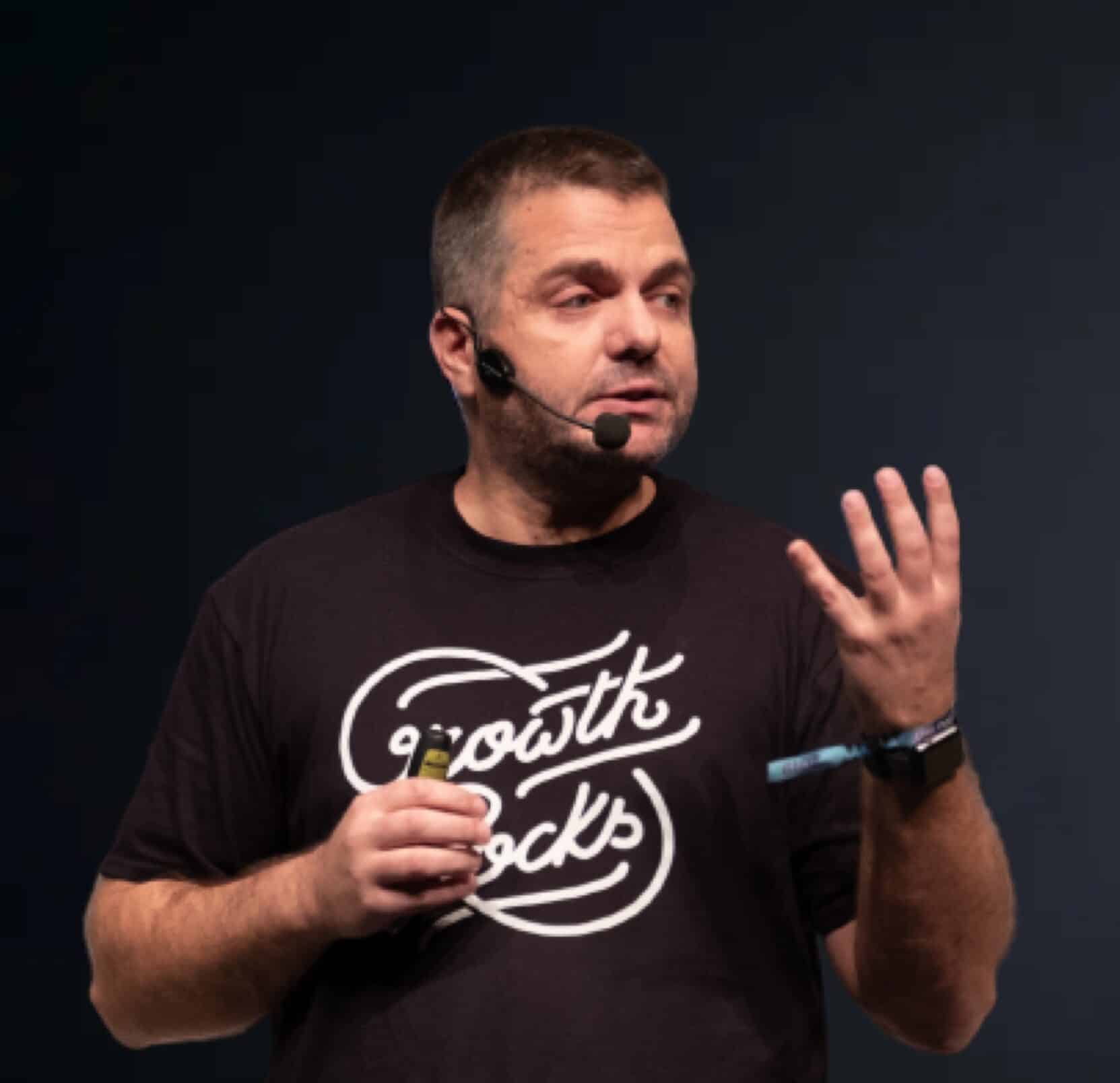
Theodore has 20 years of experience running successful and profitable software products. In his free time, he coaches and consults startups. His career includes managerial posts for companies in the UK and abroad, and he has significant skills in intrapreneurship and entrepreneurship.
